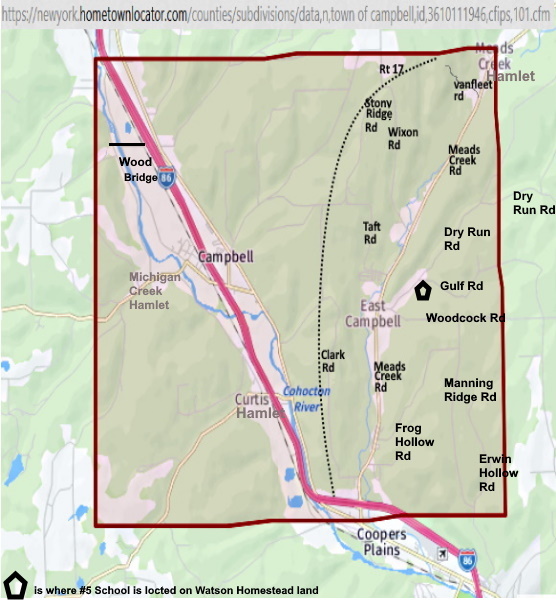
The area to the right of the black dotted line [withing the Campbell boundries] is in the
Corning Painted Post School District. Campbell boundry line is in solid maroon. Rt 86 is
in red.
Campbell Area History
The township of Campbell was organized in 1831. It is bounded on the north by the townships of Bath and Bradford, on the east by Hornby, on the south by Erwin and Addison. The name is from Robert Campbell, an early landowner. Campbell was first settled around 1801. The town was formed in 1831 from the Town of Hornby.Campbell is on the Gang Mills (Painted Post) Line of the B and H Rail Corporation. This portion of track was built opened in 1882 as the New York (Hoboken) to Buffalo line of the Delaware, Lackawanna & Western Railroad. In 1963 the route to Buffalo was severed between Wayland and Groveland, N.Y., by order of the U. S. Interstate Commerce Commission in order to promote highway transportation. Campbell was also served (c. 1853-1963) by the Corning-Rochester line of the Erie Railroad. This line was removed in 1963 by the U. S. Interstate Commerce Commission, also in order to promote highway transportation.
The townships contains some splendid alluvial soils in the valley of the Conhocton, and along Meads' Creek, and good grazing and wheat land in the uplands. Some of the finest white pine in Steuben county, was originally found in this town.
In 1846, a saw and grist mill combined was erected. Union Free school house in Campbell town, cost $4,500. It has three departments. Baptist Church of Campbell, organized as a branch of Savona, in 1870. In 1873 church erected. The first grist mill in Campbell, was built in 1812, by Gen. John Knox and Archibald Campbell. The first school in Campbell, on Mead's Creek, was taught by Rhoda Simmons in a hunter's cabin, in 1817. - First Presbyterian Church organized January 20, 1812, at the house of Frederic Stewart, church erected in 1833. Rev. B. F. Pratt, of Southport N. Y., preaching the dedicatory sermon, Thursday Nov. 5, 1833. Methodist Episcopal class organized in 1827, services for many years were held in school houses. Church dedicated Jan. 21, 1869, by Rev. M. Searles, of Auburn, N. Y. J. P. Knox and J. M. Bemis gave the lot, of edifice $2,500.
Communities and locations in the Town of Campbell
- Campbell – The hamlet of Campbell, located on the west side of Interstate 86 by the Cohocton River. County Road 125 is Main Street. It is also at the eastern terminus of County Road 333.
- Curtis – A hamlet south of Campbell village on Interstate 86.
- East Campbell – A hamlet east of Campbell Hamlet, located on County Road 26.
- Meads Creek – A stream passing by East Campbell and the name of a hamlet in the northeast corner of the town, located on the stream.
- Michigan Creek – A stream entering the Cohocton River by Campbell hamlet.
GenealogyTrails.com [Campbell History]
Wikppedia.org [Campbell History]
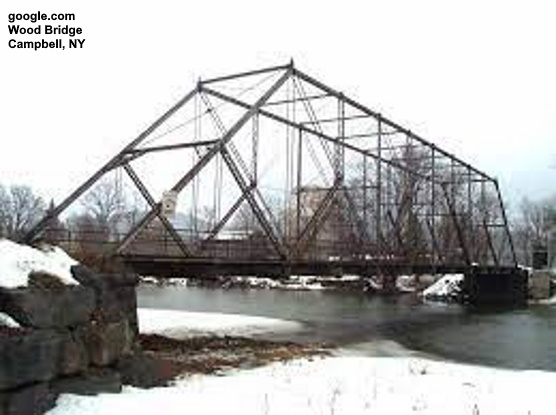
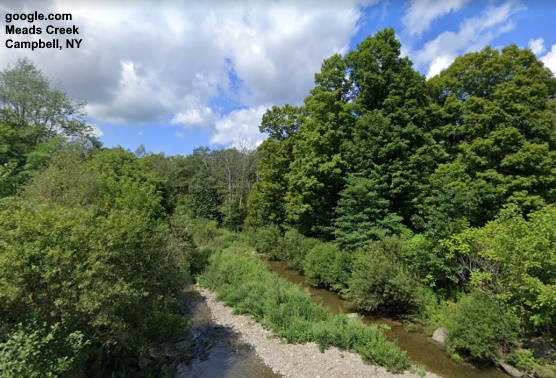
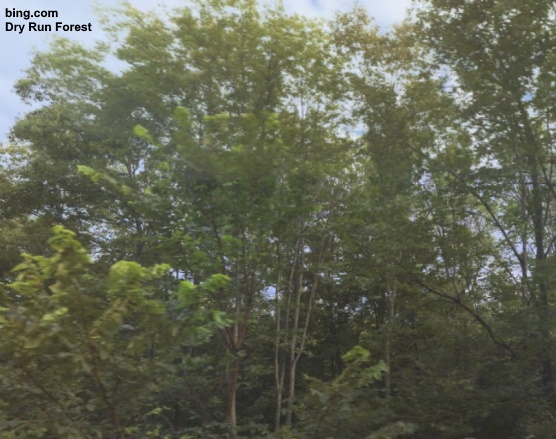
Campbell Area School History
District School Number Five, also known as "The Little Red Schoolhouse," is a historic one room school building located at Campbell in Steuben County, New York. It was built during the spring and summer of 1839 with a hand hewn timber frame of mortise and tenon construction. The schoolhouse is part of the Watson Homestead Conference and Retreat Center [Golf Rd, Campbell, NY], deeded to the Genesee Conference of the Methodist Church by IBM founder Thomas J. Watson, Sr. Watson attended the school as a child. Also on the property is a small frame structure that served as privy and woodshed. It was listed on the National Register of Historic Places in 2001.Source: Wikipedia.org [District School #5]
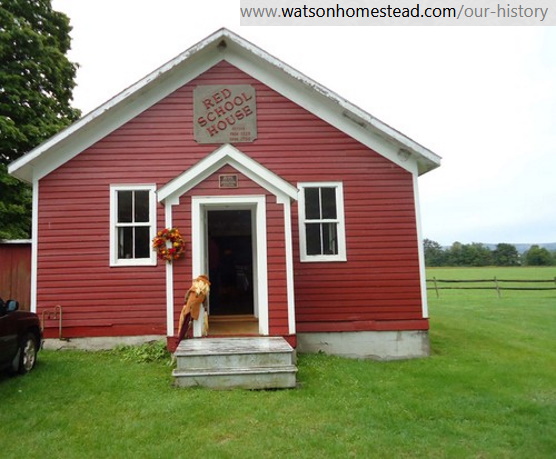
As stated above on this page, the area to the right of the dotted line is in the Corning Painted Post School District. Campbell and Savona have combined into the Campbell-Savona School District and is not discussed in this section. For information on Campbell-Savona School District see that school on Rhsaas-org School Menu.
For information on the Corning-Painted School District. View it's webpage.